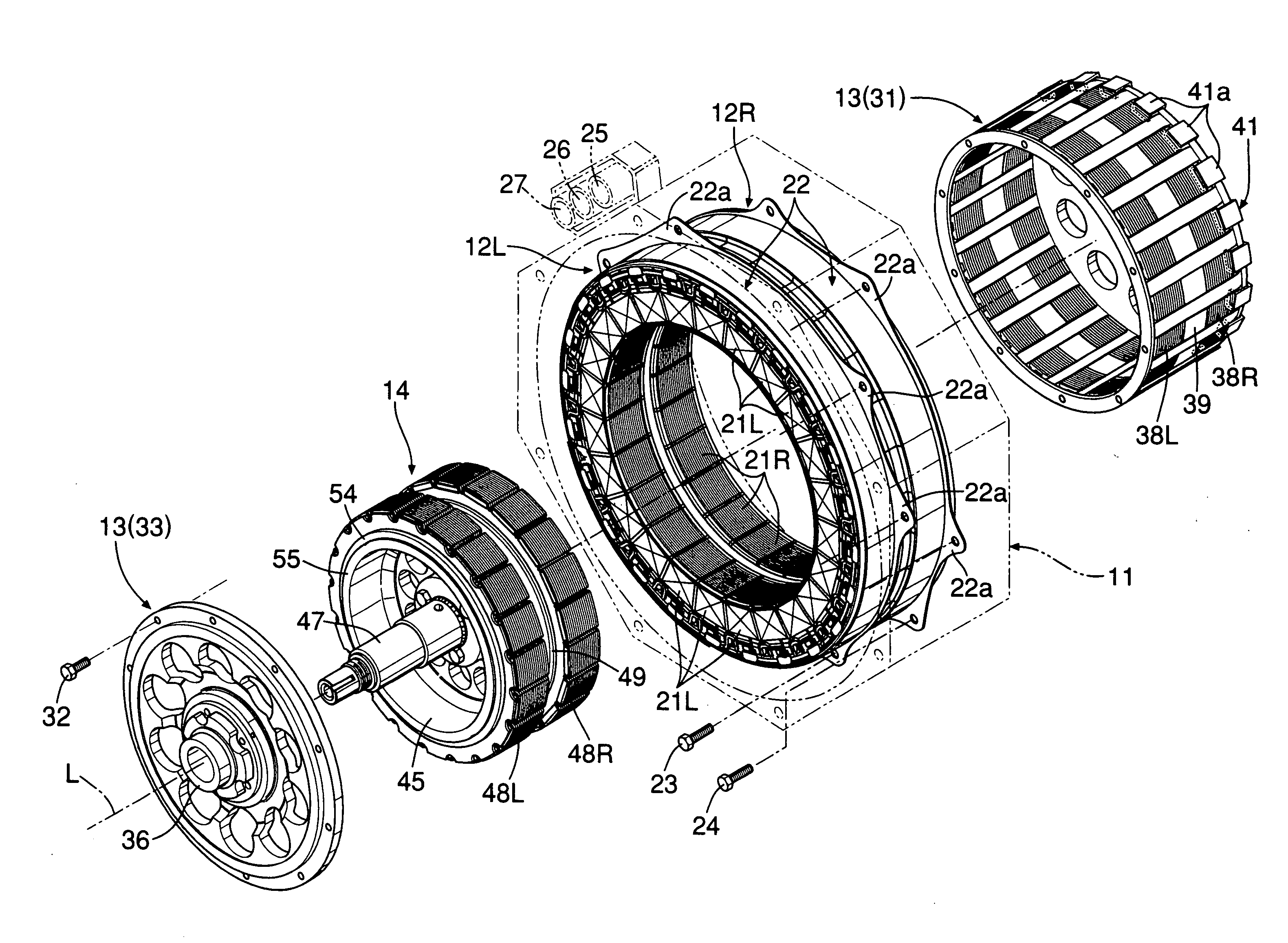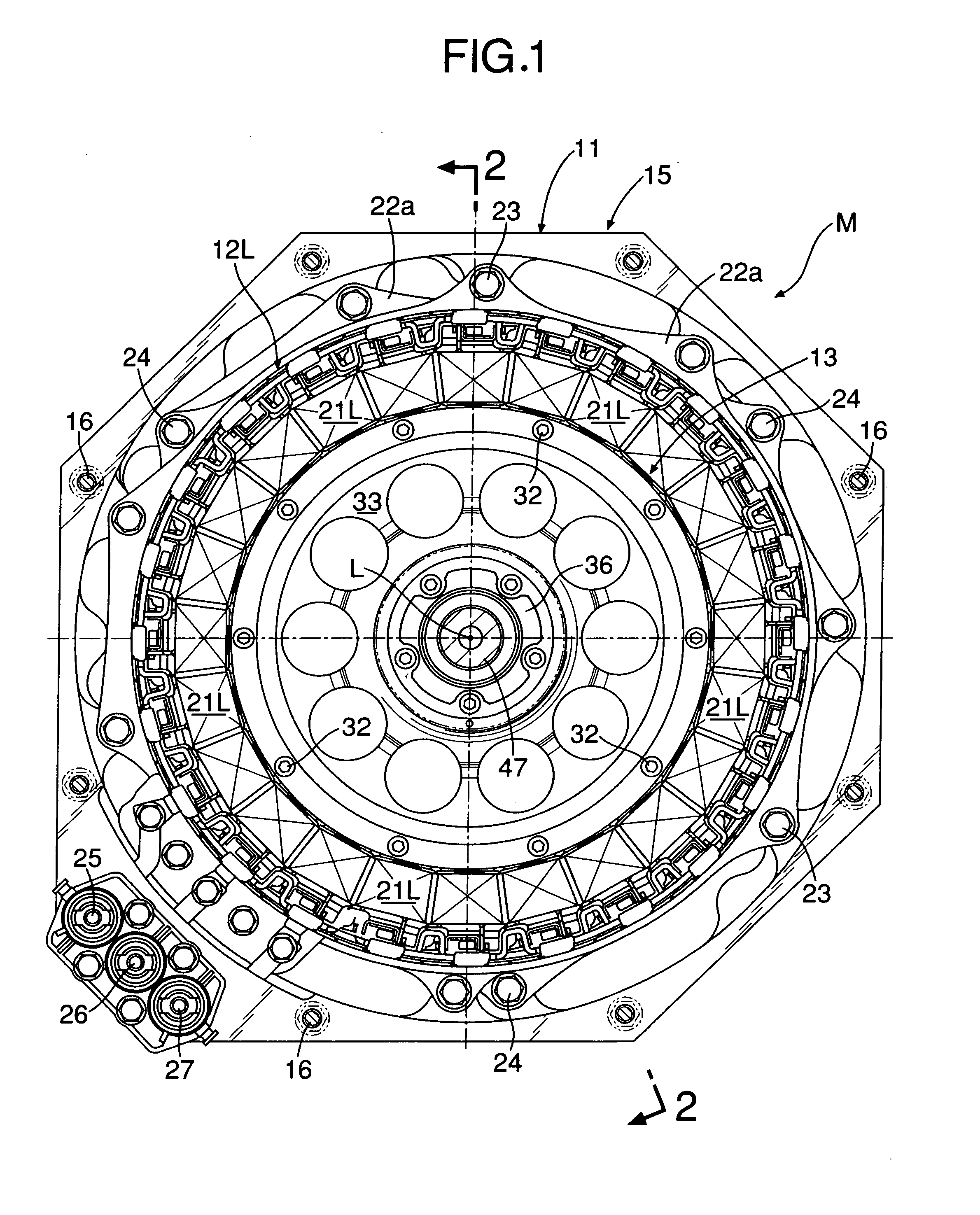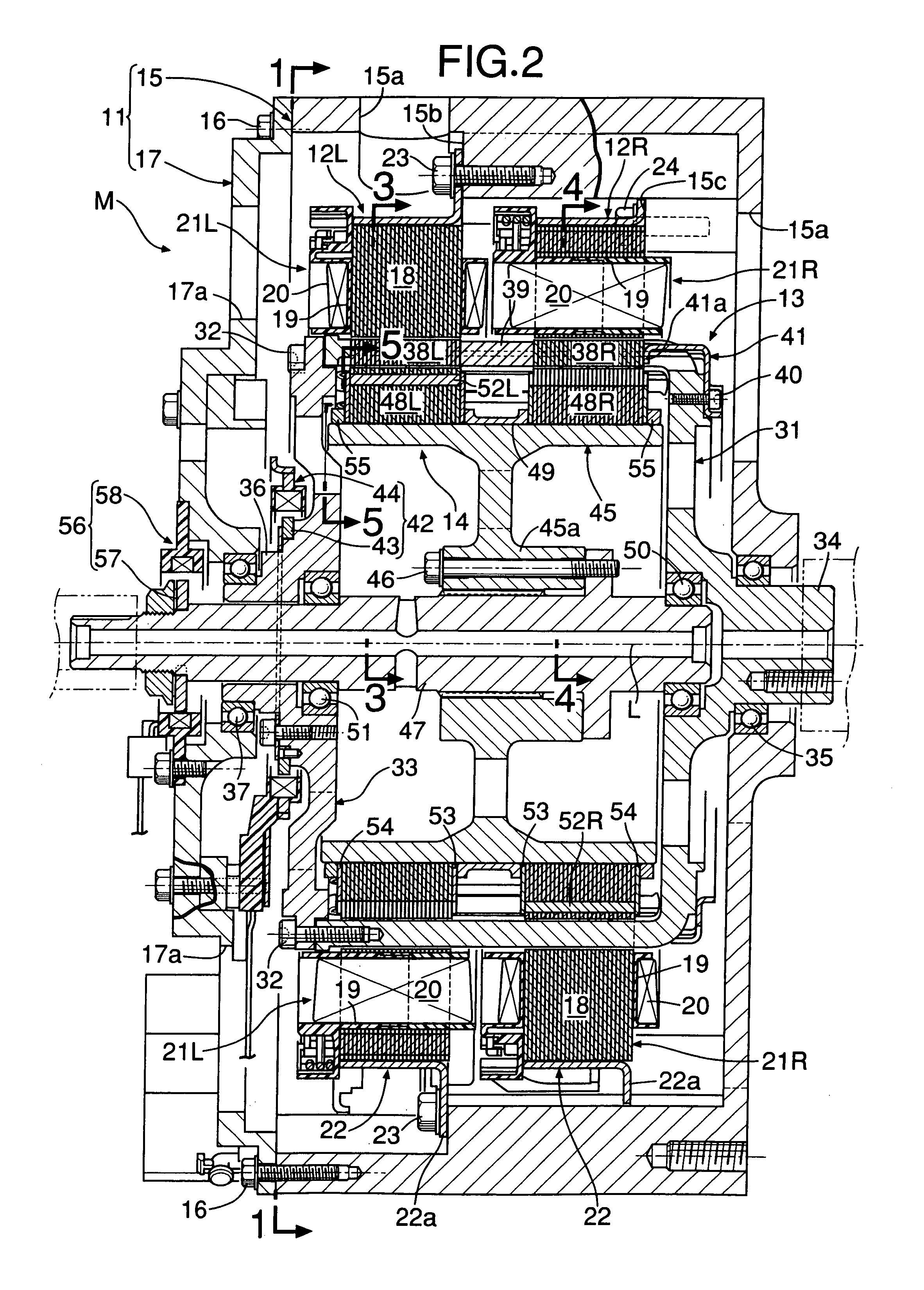Motor, rotor structure and magnetic machine
a rotor structure and motor technology, applied in the direction of dynamo-electric machines, magnetic circuit rotating parts, magnetic circuit shape/form/construction, etc., can solve the problems of difficult to secure the strength of the outer rotor, the need to cool the outer rotor, and the inability to achieve high efficiency, so as to achieve the effect of suppressing a magnetic short-circuit and improving magnetic efficiency
- Summary
- Abstract
- Description
- Claims
- Application Information
AI Technical Summary
Benefits of technology
Problems solved by technology
Method used
Image
Examples
first embodiment
[0082]A first embodiment of the present invention will be described based on FIGS. 1 to 17G.
[0083]As shown in FIG. 7, a motor M of this embodiment comprises a casing 11 forming an octagonal cylindrical shape, which is short in a direction of an axis L, annular first and second stators 12L, 12R fixed to the inner circumference of the casing 11, a cylindrical outer rotor 13 accommodated within the first and second stators 12L, 12R and rotating around the axis L, and a cylindrical inner rotor 14 accommodated within the outer rotor 13 and rotating around the axis L. The outer rotor 13 and the inner rotor 14 are capable of relative rotation with respect to the fixed first and second stators 12L, 12R, and are capable of relative rotation with each other.
[0084]As obvious from FIGS. 1 and 2, the casing 11 has an octagonal bottomed cylindrical body portion 15 and an octagonal-plate-shaped lid portion 17 fixed to an opening of the body portion 15 with a plurality of bolts 16. A plurality of o...
second embodiment
[0138]Next, a second embodiment of the present invention will be described based on FIG. 18.
[0139]In the first embodiment, the shape of the recesses 38a, 39a of the first and second induction magnetic poles 38L, 38R and the spacer 39, as well as the shape of the projections 31b of the slits 31a in the rotor body 31 are square, but the same effects can be achieved also by a triangular shape as shown in FIG. 18A or an U-shape as shown in FIG. 18B.
[0140]Further, the first and second induction magnetic poles 38L, 38R can be reliably supported by reversing the positional relationship among the recesses 38a, 39a and the projections 31b, forming the projections on the side of the first and second induction magnetic poles 38L, 38R and the spacer 39, and forming the recesses on the side of the slits 31a. However, if the recesses 38a are formed on the side of the first and second induction magnetic poles 38L, 38R as in the embodiments, eddy loss and hysteresis loss can be reduced as compared ...
third embodiment
[0141]Next, a third embodiment of the present invention will be described based on FIG. 19 to FIG. 21.
[0142]In the third embodiment, grooves 39b extending in the circumferential direction are formed in the surface of the spacers 39 of the outer rotor 13, grooves 31d leading to the grooves 39b of the spacers 39 are formed in the outer circumferential face of the rotor body 31 of the outer rotor 13, and a ring 59 made of a weak magnetic body is fitted in the grooves 39b, 31d.
[0143]When the outer rotor 13 is rotated, a centrifugal force acts on the first and second induction magnetic poles 38L, 38R and the spacers 39, an intermediate portion of the rotor body 31 in the axis L direction is deformed to bulge. However, the intermediate portion of the rotor body 31 in the axis L direction is pressed by the ring 59, thereby preventing the deformation.
PUM
 Login to View More
Login to View More Abstract
Description
Claims
Application Information
 Login to View More
Login to View More - Generate Ideas
- Intellectual Property
- Life Sciences
- Materials
- Tech Scout
- Unparalleled Data Quality
- Higher Quality Content
- 60% Fewer Hallucinations
Browse by: Latest US Patents, China's latest patents, Technical Efficacy Thesaurus, Application Domain, Technology Topic, Popular Technical Reports.
© 2025 PatSnap. All rights reserved.Legal|Privacy policy|Modern Slavery Act Transparency Statement|Sitemap|About US| Contact US: help@patsnap.com



